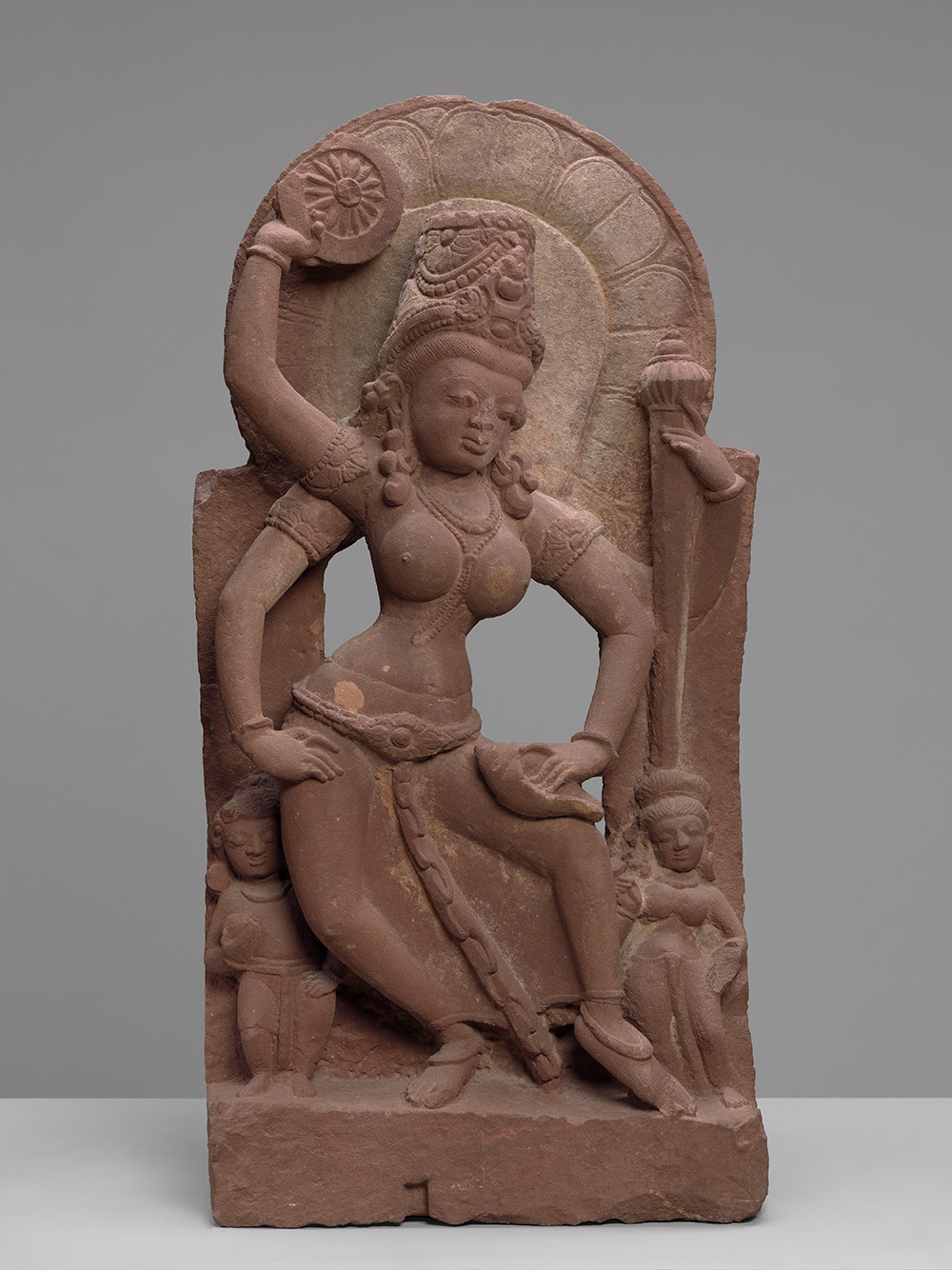
The Mother Goddess Vaishnavi Dancing, circa 800–900, India; Madhya Pradesh or Rajasthan, sandstone, Virginia Museum of Fine Arts, Richmond. Gift Nasli and Alice Heeramaneck Collection, gift of Paul Mellon, 68.8.12, 29½ x 14¼ x 6 in (74.93 x 36.20 x 15.24 cm)
Verbal Description
Hello, my name is Kamellia Smith. I am community partner of the Cincinnati Art Museum. I will be reading the verbal description for The Mother Goddess Vaishnavi Dancing in Beyond Bollywood: 2000 Years of Dance in Art.
This sculpture, titled The Mother Goddess Vaishnavi Dancing, dates from around 800 to 900. Made of sandstone, it is from India, specifically the region of Madhya Pradesh or Rajasthan. It is in the collection of the Virginia Museum of Fine Arts and was a gift of Nasli and Alice Heeramaneck Collection and of Paul Mellon. The accession number is 68.8.12.
Carved from a warm terracotta colored sandstone, this four-armed goddess stands 74.93 centimeters tall by 36.20 wide by 15.24 centimeters deep. She emerges from a slab of stone, which serves as her backdrop and platform. She wears a jewel-encrusted crown, arm cuffs, necklaces, bracelets and anklets. Curls of her hair rest on either shoulder. A belted wrap covers her legs, her hour-glass-shaped torso and full breasts are bare. She dances; her bent right leg holds her weight as her left toe taps the ground. Her lower hands are on her hips. Her lower left presses a conch shell against her body. Her upper right hand holds a disc over her head. Her upper left hand wraps around a conch-topped club or staff. Her powerful and energetic stance contrasts with her serene expression, her eyes cast a few feet in front of her left foot. Two figures barely as tall as her knees, flank the goddess. A lotus blossom halo carved in low relief arcs from her shoulders to surround her head.
Label Text
Hello, my name is Kamellia Smith. I am community partner of the Cincinnati Art Museum. I will be reading the label for The Mother Goddess Vaishnavi Dancing in Beyond Bollywood: 2000 Years of Dance in Art.
This sculpture, titled The Mother Goddess Vaishnavi Dancing, dates from around 800 to 900. Made of sandstone, it is from India, specifically the region of Madhya Pradesh or Rajasthan. It is in the collection of the Virginia Museum of Fine Arts and was a gift of Nasli and Alice Heeramaneck Collection and of Paul Mellon. The accession number is 68.8.12.
With her body dynamically posed as if in full motion, the mother goddess Vaishnavi is the female emanation of the shakti (elemental power or essence) of the male deity Vishnu. She wears his miter-shaped crown and carries with her the weapons and attributes of the god, including his discus, conch shell, and club. While shown as pensive and serene, Vaishnavi is anything but. She set upon the demonic force Raktabija with her discus weapon in battle and then danced madly in victory.
Sometimes depicted holding children, seated, dancing, or carrying weapons, the mother goddesses embody both creative and destructive elements. Their limitless feminine energy can take the form of guardians, warriors, loving mothers, and custodians of supreme knowledge.
